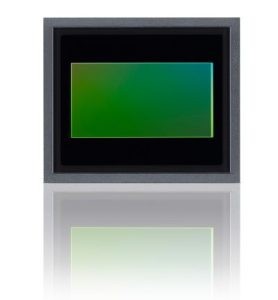Sony Semiconductor Solutions to Release CMOS Image Sensor for Automotive Cameras with Industry-Leading 17.42-Effective Megapixels
Delivering sophisticated sensing and recognition performance and contributing to safe, secure automated driving

Sony Semiconductor Solutions Corporation (SSS) today announced the upcoming release of the IMX735, a new CMOS image sensor for automotive cameras with the industry’s highest*1 pixel count, at 17.42 effective megapixels.*2 The new sensor product will support the development of automotive camera systems capable of sophisticated sensing and recognition performance, thereby contributing to safe, secure automated driving.
*1:Among CMOS image sensors for automotive cameras. As of announcement on September 12, 2023.
*2:Based on the image sensor effective pixel specification method.
IMX735 CMOS image sensor for automotive cameras
| Model name | Sample shipment date (planned) | Sample price (including tax) |
|---|---|---|
| IMX735 1/1.17 type (13.70 mm diagonal) 17.42-effective-megapixel*2 CMOS image sensor | September 2023 | 30,000 yen*3 |
*3: May vary depending on the volume shipped and other conditions.
For automated systems to deliver automated driving, they must offer sophisticated, high-precision sensing and recognition performance, encompassing all 360 degrees of the environment around the vehicle. Accordingly, there is considerable demand for image sensors that can help achieve this level of performance and support the development of more advanced automotive camera systems.
The new sensor product achieves the industry’s highest*1 pixel count of 17.42 effective megapixels,*2 enabling high definition capture of far-off objects. Moreover, automated driving systems often use automotive cameras in combination with LiDAR and other sensing systems. While typical CMOS image sensors readout signals output from pixels one vertical line at a time, this product outputs signals horizontally, one row at a time. This means that automotive cameras employing this sensor can more easily synchronize with mechanical scanning LiDAR*4, since their laser beams also scan horizontally. This better synchronization will improve the sensing and recognition capabilities of the automated driving system as a whole.
Furthermore, the new sensors’ improved saturation illuminance, made possible by a proprietary pixel structure, and unique exposure method yield a wide dynamic range of 106 dB even when simultaneously employing high dynamic range (HDR) imaging and LED flicker*5 mitigation. The dynamic range is even higher, at 130 dB, when using dynamic range priority mode. This creative design helps suppress highlight blowouts even in backlit conditions, enabling more precise object capture in road environments with significant differences in brightness, such as tunnel entrances and exits.
*4: LiDAR senses objects using horizontal laser beam scanning delivered by mechanical moving parts. This is a common method used in the automotive sensing domain.
*5: LED flicker that can occur when capturing LED signage or traffic signals.
See all the main features on Sony’s website










